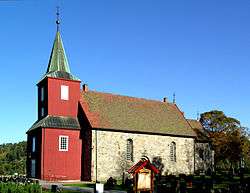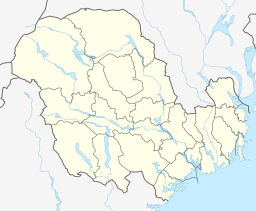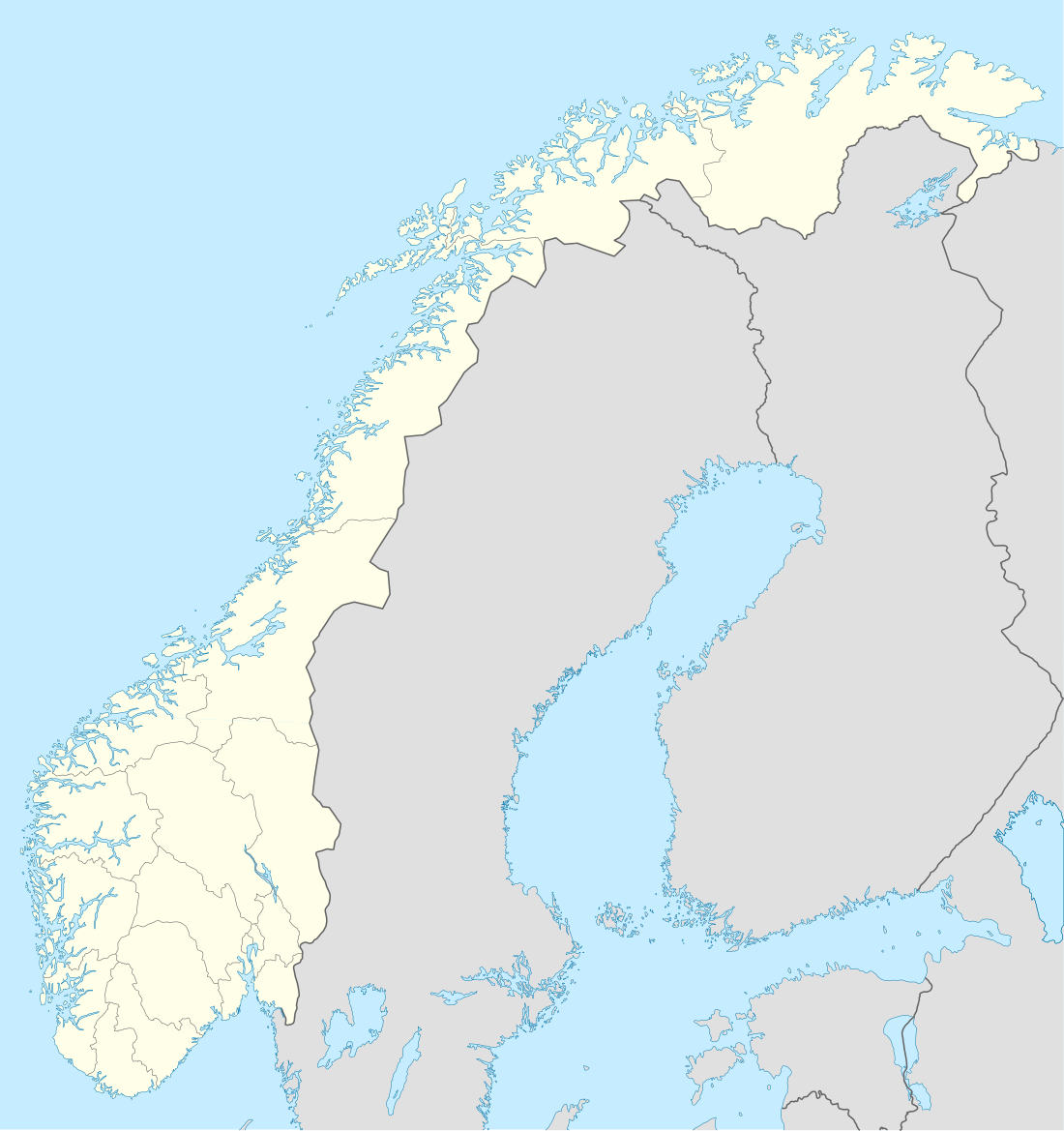Hedrum Church
Hedrum Church (Norwegian: Hedrum kirke) is a medieval stone church dating from c. 1100 in Hedrum, Norway.[2]:139 It is built of stone and can accommodate 300 people.[1] As a medieval building, it automatically has protected cultural heritage status.[3]
| Hedrum Church | |
|---|---|
Hedrum kirke | |
 | |
 Hedrum Church Location in Vestfold og Telemark  Hedrum Church Hedrum Church (Norway) | |
| Country | Norway |
| Denomination | |
| Churchmanship | Evangelical Lutheran |
| History | |
| Status | Parish church |
| Architecture | |
| Functional status | Active |
| Style | Romanesque |
| Completed | 1100 |
| Specifications | |
| Capacity | 300[1] |
| Materials | Stone |
| Administration | |
| Parish | Hedrum |
| Deanery | Larvik |
| Diocese | Diocese of Tunsberg |
History
Hedrum Church is named in the Borgarting Christian law code (kristenrett), written c. 1080. It was one of six "county churches" (fylkeskirke) in the area around the Oslo Fjord. Before the dioceses were created, the clergy of the county churches were appointed by the king.[4] A church may have been built in Hedrum in 1060, probably a wooden church. A celebration of the 950th anniversary of the stone church, which was built c. 1100, was held in 2010.[5][6]
Building
The church has a rectangular nave, a square chancel, and a semicircular apse.[1] Archaeological studies of the structure indicate that the apse was built later. The arch leading to the apse has the same configuration as the arch to the chancel, suggesting that they may have been created at the same time. It is therefore assumed that an older wooden church stood east of the chancel and was later replaced with the apse.
The nave was extended by 4 meters (13 ft) in 1666,[1][7] and so the western part with the portal and doorway dates from after the Reformation.
The church underwent restoration in the 1920s. At that time, the exterior plaster was removed so that the stonework was exposed,[1] and the sacristy was built on the north side of the chancel.
Inventory
The altar was given to the church by Peder Tøgersen and Hilvig Mickelsdatter in 1664. There are two female figures carved on either side of inner part of the pediment; the one on the left represents Temperance, and the one on the right Wisdom. They are flanked by Saint Peter holding a key and Saint John holding a chalice. The painting in the center shows the resurrection.
There are many gravestones with coats of arms covering large parts of the floor in the church.[8] The church's gravestones are registered with the Genealogy Society of Norway (DIS-Norge, Slekt og Data).
There is an Iron Age burial ground near the church.[2]:68
References
- Kirkesøk: Hedrum kirke.
- Krohn-Holm, Jan W. 1978. Hedrum bygdebok: Kulturhistorie. Hedrum: Hedrum kommune.
- "LOV 1978-06-09 nr 50: Lov om kulturminner – § 4. Automatisk fredete kulturminner". Lovdata. Retrieved March 10, 2016.
- Gathorne-Hardy, Geoffrey Malcolm. 1956. A Royal Impostor: King Sverre of Norway. Oxford: Oxford University Press, p. 16.
- Sandbrekkene, Bjørn-Tore. 2015. En svært personlig gave. Ostlands-Posten (June 27).
- Bjerke, Odd, ed. 2010. Hedrum kirke: 950-årsjubileum 2010. Larvik: Hedrum kirke.
- "Kulturminnesøk: Hedrum kirkested". Archived from the original on 2014-01-06. Retrieved 2016-03-10.
- Brendalsmo, Jan. 2010. Fylkeskirken i Hedrum. In Odd Bjerke (ed.), Hedrum kirke 950-års jubileum 2010, pp. 27–35, 274–275. Larvik: Hedrum kirke, p. 275.
Further reading
- Bjerke, Odd, ed. 2010. Hedrum kirke: 950-årsjubileum 2010. Larvik: Hedrum kirke. ISBN 978-82-303-1593-4.
- Ekroll, Øystein, Morten Stige, & Jiri Havran. 2000. Kirkene i Norge, vol. 1: Middelalder i stein. Oslo: ARFO, pp. 92–95. ISBN 82-91399-09-3.